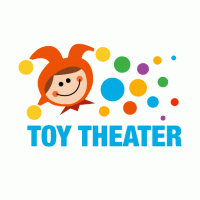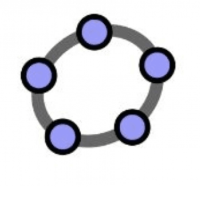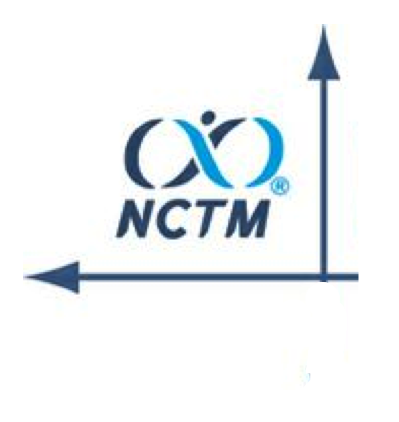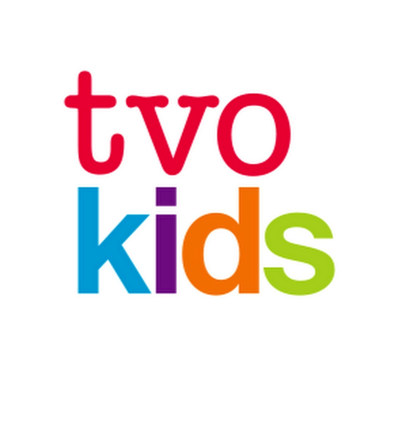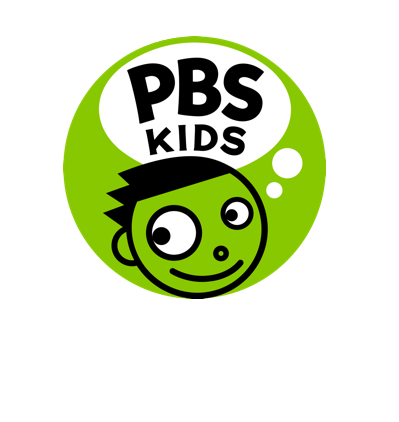Over the past three cataclysmic months, one extraordinary phenomenon (among many) has been the overnight upending of traditional schooling. Within a week of school closures in March, teachers across Canada and around the world geared up to continue their programs at a distance while juggling omnipresent child care and other pressing family demands. Some have described the pandemonium as school boards scrambled to provide families with digital equipment and an array of supportive resources in record time. It is remarkable how quickly the unthinkable becomes routine. Recently, in the final stretch of the school year and almost 12 weeks into our new normal, the Robertson program interviewed a few elementary school teachers to learn about their experiences teaching math or science online. While responses naturally varied according to circumstance, philosophy, and grade level, there were a surprising number of common themes.
Across our small sample of teacher interviews, concerns around student engagement and well- being overwhelmingly predominate, and each teacher has made it a priority to find innovative solutions that work for the individuals they teach. From K-6, they speak of the importance of choice in facilitating engagement and making learning accessible to all. That said, the new and critical role of families in enabling and furthering their children’s online learning exposes a stark socio-economic divide that goes well beyond issues of access to technology. Another concern in a field that has strongly stressed the importance of concrete physical experience in conceptual development – especially with younger learners – is how to ground concepts in the absence of long cherished, carefully designed manipulatives, such as relational rods, pattern blocks, or interlocking cubes. Interestingly, math educators such as Julie Sarama and Doug Clements have long argued for the (sometimes superior) effectiveness of virtual manipulatives in math learning, suggesting perhaps one possible silver lining in the rethinking of pedagogic habits and assumptions forced upon us by Covid-19. Finally, the teachers almost uniformly speak of relationships – which have of course expanded to include or require families in a new way – as the pillar and ground for all student learning. Re-establishing relationships with and among students across the weird disconnect of Zoom or other virtual platforms, without the familiar social coordination of eye contact or body language, remains a challenge.
As we move into summer and start to picture where schooling might take us in a radically uncertain fall, the commitment, creativity, and unimaginably hard work of teachers is an inspiration. The teachers’ stories here offer just a flavour of the recent experiences of teachers everywhere. In the interests of space, some interviews have been slightly edited or condensed.
Math Resources
Interviews with Teachers
Kindergarten
Teaching for 24 years
What grade do you teach? How many children are there? Tell us about your school.
There are 28 kids – 9 SKs, 19 JKs. The majority are middle- to upper-middle class from diverse backgrounds. A lot of the parents are professionals of some sort.
How have you approached teaching this age of children online – what has the experience been like?
It was very difficult in the beginning, but we do what we have do and I’ve learned to enjoy what I’m doing. I love meeting with the children, even online. I embrace whatever minutes I have with them. In collaboration with the kindergarten team, I post a choice board for the week, trying to make sure it’s play based, uses the outdoors, is inquiry-based. Many parents are working, so the choice board lets them decide what they can handle. I set up a portfolio for each child so parents can post photos of videos.
When the school closed, each child’s parents were asked to pick up a bag of materials I’d prepared, including things like counters, dice, manipulatives as well as templates they can use in our lessons (such as 10 frames, dot cards, arrays, and so on). I phoned every family to follow up - did they pick up their package? There are only a couple of students who haven’t yet gotten access – the Board is still delivering devices. I also asked parents to provide a consistent workspace and to sit with their kids in our meetings.
We spent time in the beginning establishing rules and norms for our online classroom, just like in a physical classroom.
I’m on the phone a lot with kids and parents. in the beginning all I did was play with them to get them used to this before we eased into more structured learning. I asked myself, “How do I build virtual learning trust with the parents and the students to get to a safe space of comfort so children can be successful and flourish?”
Roughly what proportion of your online teaching is spent on math?
All my online teaching is math. The children also follow an online reading program with videos for parents and each week I do a quick literacy check in with the children.
I teach math to the JKs each Wednesday and SKs each Tuesday in small groups of 4, in their regular classroom groupings, with a 15-20 minute math lesson or activity per group. I prepare lots of visuals on google slides.
Fridays we have an end-of-week celebration in our small groups, with lots of play, sometimes costumes. Parents sign up for a time in the afternoon and pretty much everyone participates.
Could you describe one lesson or activity that really worked?
When I started planning, I wanted to begin with familiar materials and concepts, so in JK we did lots of comparisons, games with “more”, “less” and “same as”. We used dot cards that got progressively more challenging. Then I’d orally give them a problem to solve with manipulatives – things like “show 2 more” – and ask parents to make sure their camera projected the workspace. It’s an amazing assessment opportunity, you see all the strategies children use . . .
The other important piece was a conversation with parents, asking them to allow their child “to use whatever strategies they come up with – they’re very competent”. Parents started to see how amazing their children’s strategies are. They sit and listen or help with the technology. They’re fascinated with the different strategies kids use. It was a learning curve for the parents. They see now how children are beginning to internalize concepts.
We found our groove. The children love it! I always start with a game, and they look forward to it.
With the SKs we’ve explored different concepts. They’ve been Investigating equalities, and have found complex patterns in the numbers. Last week we used a pan balance to solve missing addend problems. I told them “Mathematicians use symbols – how else could you show me 4=4?” They suggested 2+2 = 1+1+1+1. Some also realized that in the equation 4+1 = 3+2, 3 is one less than 4 and 2 is one more than 1 – an addend on one side changes so an addend on the other side has to change as well. This led to lots of work with number composition and decomposition and making equalities, such as 10 = 5+5 = 6+4. We explored lots of problems related to using mental math flexibly. Each time, I take a lot of photos and write notes about what they’re saying.
Parents are fascinated - “I can’t believe how [my child] figures out the patterns in the numbers!”
What has been the most challenging part of teaching math online?
The collaborative piece where children listen to each other talking about solutions is not as successful online. They’re not able to see each other’s work as clearly and to compare approaches. It’s very challenging online, so I take photos of the children’s learning then post them side by side and have a conversation. And we talk about different solutions based on types of strategies.
How has this worked for students with learning differences?
Just as in the classroom, I started to meet one on one with some children for math rather than in groups. They still meet with their small group on Fridays but I meet one on one with 3 SKs and 6 JKs once a week. I’ve seen very positive results.
How has your approach changed since you started online teaching? What have you learned? Do you have any tips for teachers?
It’s constantly evolving. For me, what’s central is the relationship with the students and their intuitions about their own needs. That’s why I moved to one–on–one interactions. Also building the relationship with parents, creating a safe space – that’s key. If that’s not in place, virtual learning can’t happen. Parents have to trust you and see how it works, understand how the kids think and learn. They need to see that their children are encouraged to be thinkers. We always end a session by celebrating the learning that’s taken place.
Do you have any suggestions to families for the summer?
I’m always telling parents to allow children to play. Play offers valuable opportunities to create narratives, engage with natural materials, and use everyday materials for mathematics.
Anything else?
I miss being with the kids in the classroom. I miss seeing them.
Teaching for 8 years
What grade do you teach? How many children are there? Tell us about your school.
My school is proud to offer a varied, well-balanced and inclusive curriculum for students in Kindergarten through Grade 8. Our support programs offer a variety of services to students in the school, including English Language Learners, as well as intensive resource programs to support students with individual academic needs. Our Co-curricular program is exemplary and offers our students a wide variety of activities in which to participate, in both the arts and athletics.
Roughly what proportion of your online teaching is spent on math?
We (DECE & I) offer 3 types of learning experiences for my students:
- Language-based experiences
- Mathematics-based experiences
- S.T.E.A.M. based experiences
Could you describe one lesson or activity that really worked?
One experience that was an overall success invited students to think about where math lives in their kitchen. Students were asked to explore a space where they prepare meals with their families and to think about where they could find math.
To help guide parents/guardians with this learning task, we wanted them to consider the following questions:
- How does your child reveal their knowledge and thinking about quantity relationships?
- What does the way your child uses loose parts/materials reveal about their mathematical thinking?
- How do children think about measurement and the ways we use it in familiar contexts?
- How do they reveal their thinking about measurement?
What has been the most challenging part of teaching math/science online?
From an Early Years perspective, a huge portion of teaching and learning online relies heavily on parental support. For example, parents need to log into the virtual classrooms, read the assigned learning tasks, and then essentially “teach” their child. The documentation and sharing of the child’s thinking and learning also relies heavily on the support of parents.
The most challenging part of teaching math online is not being able to experience students’ thinking as they problem solve using the provided materials to demonstrate their mathematical understanding. What are they saying? How are they interacting with the loose parts? How do they document their thinking and learning? These are all aspects that becomes limited when teaching online.
As educators, we know when to intervene when a child is at “play” and which questions to ask to notice and name the child’s learning. Additionally, we try our best to be as authentic as we can when we are documenting students’ thinking and learning. As a result, this allows us to plan our next steps in supporting our youngest learners. Much of this becomes limited in a virtual platform because it all comes back to parents wearing the hats of educators.
How has this worked for students with learning differences?
Remarkably similar to how my DECE and I support all of our learners in our classroom, we applied the same pedagogical approaches as we shifted to remote teaching and learning. We took appropriate measures based on each student profile to make sure their needs were being met.
First and foremost, we needed to know that each student had access to a piece of technology with access to the internet. Together, we created a Google Form to learn about our students’ and families’ at-home dynamics. Once the data was collected, we were able to then research, collaborate and plan accordingly to meet the needs of all of our families.
Initially, we had been using ClassDojo to communicate and celebrate the learning in our classroom. As a staff, we were thinking about which platform to use, especially for parents with multiple children attending our school. To help ease this transition, we collectively decided to use the same platform to make it accessible to parents and give access to our PREP. teachers to share their lessons – all for one and one for all!
Even though all of our students were connected to our virtual classroom, we anticipated that not all would participate. This was not business as usual. We encouraged those who did not share their thinking or learning in our new virtual classroom to continue to use ClassDojo to communicate with us. Or we would simply call to check in.
How has your approach changed since you started online teaching? What have you learned? Do you have any tips for teachers?
Remote learning has really highlighted the view of privilege for me. When providing learning experiences for students, I carefully think about how to phrase my questions and the open-endedness of the experience. I think about how students might use what they have at home to access the experiences I am offering. I think about the inclusive design framework and how this supports students’ learning from home. I think about how to make learning meaningful and relevant to my students–so they can see the purpose and make meaningful connections. I ensure that I provide choices for students (using choice boards) and offer them a variety of options for documenting their thinking and learning (e.g., using loose parts, taking a video, taking a photo, drawings, voice recordings, telephone conference to hear about the learning…)
Simply because a child is not accessing the learning experiences offered in our virtual classrooms, I have learned from telephone conferencing about all the other amazing learning that happens organically at home, through activities such as sorting laundry, cooking, helping to set the table and knowing how many utensils are needed. For me, I have come to realize that learning is always happening.
Initially, I was flabbergasted to think about what a play-based program might look like, sound like and feel like as we navigated into a digital landscape. I also wondered, what might remote pedagogical documentation look like? The more I thought about it, the more unanswered questions I had, which led to feelings of anxiety and panic (to say the least). I took a deep breath, paused, and decided to begin this new adventure as if it was the first day of school-I needed to get to know my students.
- This is not “normal” so trying to make it seem like business as usual will easily make you feel deflated and as if you are not doing “enough.”
- Less is more, as we do not know what each family is experiencing during these times of uncertainty.
- Learning is always happening at home, both explicit and indirect.
- Be flexible. Be understanding. Let families know you care about their child’s well-being – learning is always happening
Do you have any suggestions to families for the summer?
- Be flexible but have a somewhat consistent schedule so that children know what you expect from them
- Do what works for your family – each day is its own!
- Communicate with your child about the current situation
- Learning is always happening – focus on your family’s well-being!
- Remember you are doing your best and that’s all that matters. Sometimes doing nothing is OKAY!
Teaching for 17 years
What grade do you teach? How many children are there? Tell us about your school.
I teach a JK/SK class of 14 children in a small community school in downtown Toronto. The school has 300 children overall, mostly from reasonably well-off families. There’s a small ELL population.
Our kids are very fortunate – they come with so much already, and parents have been very supportive of what we’re trying to do.
How have you approached teaching online at this age – what has the experience been like? Roughly what proportion of your online teaching is spent on math?
Each week I meet nine times with individuals or pairs, and once with the whole class. I also post a weekly choice of activities to do at home. There’s a variety of optional possibilities – including math – for families to choose from. I try to make the activities as hands-on as possible. The kids don’t need more screens.
Probably about 50% of my total time online is spent on math. All of my weekly whole-class live lessons are math-related. The rest of the time I meet individually or with pairs of children for literacy activities – I read to them, they read to me, we play a game, and so on.
Could you describe one lesson or activity that really worked?
It’s a little hard to really know how well they work. A lot of my math lessons have focused on measurement, because there’s so much you can do at home with everyday materials. The other day I built a balance scale using a hanger and plastic cups and posted a video showing how I did it. When I met with the class, I showed them a collection of objects and photos of those objects, things such as a big beach ball, a little toy car, a bottle of sunscreen, a soup can and so on. Then I asked the kids to think about questions such as “Which object do you think is heavier or lighter, the big blue ball or the toy car? Why do you think that?” After hearing their ideas and predictions, I put the actual objects on the balance scale so they could see which really was the heaviest. All kinds of interesting questions came up; for example, how does size affect weight? Some kids were sure that the big blue ball would be the heaviest . . .
At least three children later made their own balance scales and tested out objects in their homes, sending photos. I liked that activity because it felt creative – kids love making things!
Another time, we did something similar with capacity, filling containers of different sizes and seeing how many small containers of water it took to fill a larger one. There was also a sink or float activity which linked with both the weight lesson and the capacity lesson because it involves density. The heaviest object isn’t always the one that sinks.
Another activity was measuring, using non-standard units such as Lego blocks. The kids were challenged to find something taller than or shorter than a reference Lego tower. Afterwards, one girl sent a photo of herself and her brother measuring themselves with Jenga blocks!
What has been the most challenging part of teaching math online?
It’s harder to keep all the kids engaged, or even to know if they’re really engaged if they don’t talk during our group lessons. It’s so different from sitting together in a circle where everyone feels they’re participating just by physically being with the class.
Young children need physical, hands-on learning. That’s a lot harder to do when you’re only communicating on a screen. Also, sometimes assessing what children really understand can be challenging because I can only know for sure what parents tell me.
How has this worked for students with learning differences?
A couple of kids are very quiet when we meet but seem to be following along OK. If I had a student with serious learning needs I’d be working closely with their parents.
How has your approach changed since you started online teaching? What have you learned? Do you have any tips for teachers?
The big piece of learning for me has been that less is more. At the beginning I felt that I had to post a lot of activities. Now I’m trying to make them more hands-on and open-ended, and to post less. It’s important not to overburden families or myself. I try to keep it creative. As long as children can pick one or two activities a week – like from a choice board – and tailor those activities to suit themselves, it’s probably plenty. My son gets something new each day and he’s drowning!
Do you have any suggestions to families for the summer?
My main recommendation is let loose this summer, make it like any summer, let the kids play, let them relax. Read to them. Encourage math in daily talk, like when you’re out on a walk or eating dinner, cooking, measuring, counting . . .
Go with the kids’ ideas. For example, after I did a “stuffy” tally chart with the class, a student shared a tally chart she spontaneously made about blueberries – how many were sweet, sour, hard, or soft.
Anything else?
Today I showed the kids a photo of field of dandelions and asked what could we do to figure out how many dandelions there are? Each time, some children just listen, some participate, and sometimes the kids who would have the best ideas don’t participate. Some kids have stopped showing up because they’re too shy or they just lose focus or wander away. Individual chats are an important way to connect with those kids. I might just read them a story, or play a game, maybe send them on a scavenger hunt.
Teaching for 2 years
What grade do you teach? How many children are there? Tell us about your school.
Tawingo is a small independent, community-based school that encourages children to build relationships across the grades. With a strong focus on inquiry-based outdoor education, children in the Kindergarten program spend lots of time outside. I co-teach in the outdoor Kindergarten program which includes 16 children ages 3 to 6.
How have you approached teaching online at this age – what has the experience been like? Roughly what proportion of your online teaching is spent on science?
Since moving online, half of what I teach is science. I encourage families and children to follow a daily schedule which includes a daily inquiry activity, math 3 times a week, and daily literacy.
Could you describe one lesson or activity that really worked?
Right before school closed, we were getting ready to plant a garden. We had been doing experiments around plants and growing things, inside and outside. We had talked about what plants need to survive. We decided to move into an exploration of living and non-living things. I asked children to sort things they could find both indoors and outdoors into three boxes: living, non-living and things they weren’t sure about. They collected all sorts of things. One child wondered about whether a vacuum was alive because it was powered by electricity. After this exploration, the class created a definition for living and non-living things. Then children were able to go back to the items they had collected and decide whether they were living or non-living based on the definition. This activity was very cut and dried which I think made it easy for parents. It also helped facilitate sharing between parents and children. Sometimes I’m not so sure why some things go well and some things don’t!
What has been the most challenging part of teaching science online?
Not being able to hear the kids’ questions. That usually helps us decide where to go next. With younger students, their questions can be subtle so you need to listen carefully or ask follow-up questions. It’s much more difficult to hear what they’re thinking and therefore it’s hard to know what to do next to build off the students’ ideas. The format isn’t really conducive to inquiry-based learning.
How has this worked for students with learning differences?
In some ways, it’s been beneficial. There is a wide range of ages in the class and the activities are open-ended to allow all children to access the content. During this time, students are separated from each other and we’re very lucky to have parental support. Parents can do the activities one-on-one with children and are able to go deeper. I have seen a lot more writing because children have that one-to-one support.
The online interaction can be tricky, and it’s varied across the class. Some children can’t engage through the platform and the material. I send teacher videos to the parents and I get feedback from parents that some kids are not able to sit through the video. It’s been difficult to reassure parents that they’re not doing something wrong. Parents are worried about attention to the task and I try to remind them that there are not so many structured activities during school!
How has your approach changed since you started online teaching? What have you learned? Do you have any tips for teachers?
I have changed my approach to make activities more structured versus more inquiry-based. It has really been trial and error. I realized that open-ended activities can feel overwhelming for parents. Cut and dried activities are easier for parents to access. I’ve learned to remind families that nothing is mandatory – this is more than we would do at school. I think families are feeling a lot of pressure.
I encourage teachers to video themselves. I think children feel connected in some way when they can see you. Also, when sending out instructions, if you have the materials in front of you it’s helpful because sometimes students just watch the video and don’t do the activity. In terms of ideas for lessons, if any lesson can be done outside it’s wonderful for kids and families. Go on Twitter! I have gotten lots of ideas from Twitter!
Setting boundaries has also been helpful for me. I have found that sticking to stated hours when I’m going to reply to e-mails with families can set good boundaries for online learning.
Do you have any suggestions to families for the summer?
Recyclable items have endless uses and loose parts can create a lot more hours of play than toys that have a direct purpose. If possible, consider having an outdoor set up with buckets, kitchen stuff, a water source and toys and give children extended periods of time to play. Also, listen to your children’s questions because they are often an indication of what they are thinking about.
Finally, don’t be hard on yourself! What your child is up to or likes to do is exactly what they should be doing in that moment. The most important thing is that they are happy.
Primary/Junior
Teaching for 6 years
Roughly what proportion of your online teaching is spent on science?
About 20% of my teaching is focused on science with the remainder focusing on literacy and math.
Could you describe one lesson or activity that really worked?
I wanted to think about something children could do to connect with nature even if their parents don’t do nature walks, or if they don’t have a backyard or balcony. We had been talking a lot about birds, tracking birds and their habitats. Also about how the environment has changed since Covid. We watched French news videos that showed how different populations of birds have really benefitted from humans not being out there. We brainstormed using graphic organizers and debated whether we should open or not open the city, considering the impact of those decisions on wildlife. One activity that really engaged the children integrated our study of birds and art. Children sketched or cut out the outline of birds (there’s a template on the Evergreen Brickworks site – they have great resources). Then they pasted their birds on the windows so the birds could avoid flying into windows. I think they really enjoyed this activity because it was a break from the screen and occupied another part of their brain, making it more engaging.
What has been the most challenging part of teaching science online?
I have to say it’s been an adventure – especially with what’s currently going on in the world in science. It’s difficult to engage students when you’re not actually with them and also hard to find resources that children can access in French. There’s a lot more time spent making content.
How has this worked for students with learning differences?
I still feel I’m not reaching everyone. Some kids are doing better at home because it’s calmer, but there are kids whose parents are struggling to get them to do things – sitting in front of a computer screen is really hard. I need to include experiments and hands-on activities they can do at home. It helps to give children choice because then they are more likely to engage. Science is hard with kids who have lower reading levels, so I speak one-on-one by phone to work through it with them. I often take a grown-up article and rewrite it in kid-friendly language. I communicate with parents and let them know that whatever they can get done is great, ask if there’s anything I can do to help, like sending different game-based work or checking in more frequently. Some parents like this but some parents just want to be left alone. I’m still figuring it out.
How has your approach changed since you started online teaching? What have you learned? Do you have any tips for teachers?
I am more aware of different resources out there – what’s good, what’s not good. It’s been neat to grow my knowledge base. I’ve also learned to be more in the moment. In science, so much happens and we don’t notice. It’s important to learn to work the curriculum around that.
Do you have any suggestions to families for the summer?
Get out there and smell the roses. Don’t worry about the nitty gritty – read every day, play games together, plant, get out to the ravine. I know this is very difficult for a lot of working parents.
Teaching for 3 years
What grade do you teach? How many children are there? Tell us about your school.
I am a grade 4/5 Extended French teacher at Diefenbaker Elementary School in East York. The community at Diefenbaker is one of the most supportive communities I’ve ever worked with. At Diefenbaker, it is clear that everyone’s main goal is to support students and support each other. You’ll rarely find a teacher who isn’t willing to share resources or help you connect with a student.
Roughly what proportion of your online teaching is spent on math?
Approximately 1/4 of my online teaching is spent on math. My other time is spent on French language, English language, science, and social studies.
Could you describe one lesson or activity that really worked?
There hasn’t been one specific online lesson that really worked well, but what has been effective is consistency in routines and lessons, similar to what we do in an in-class setting. I always provide students with the opportunity to review and reinforce previous learning each week. This is followed by the opportunity for new and continued learning through videos and mini-lessons. After a mini-lesson or video, students practice their new learning through problem solving or game-based learning, and receive feedback or discuss their work.
What has been the most challenging part of teaching math online?
I always look forward to teaching a hands-on math lesson that I’ve put a lot of thought and effort into. This is especially true for lessons where students use manipulatives, explore different concepts together, and learn about problem solving. The most challenging part of teaching math online has been trying to figure out how to provide those same experiences from a distance, taking into consideration that students may or may not have resources and supports at home.
How has this worked for students with learning differences?
For distance learning, I’ve been using choice boards which have allowed my students to choose how they want to learn about a particular concept. It has also given them some freedom in terms of which activities they complete. Each week, I include activities that cater to different interests and strengths. As well, I provide students with activities that both introduce new learning opportunities and offer the option to look back and reflect on previous learning.
How has your approach changed since you started online teaching? What have you learned? Do you have any tips for teachers?
It’s taken some fine tuning, based on feedback from parents and students, but my approach has always been to provide choice and keep the learning open-ended. I provide my students with a variety of activities to complete during the week on a schedule that works for their own unique home situation. I understand that not all students have access to technology or equal support from adults. I’ve learned that allowing them to choose when they complete their work and providing options to work independently or with an adult helps students feel supported and successful.
Some tips for teachers:
- Find what works best for you. It’s OK if you don’t feel comfortable recording yourself for a math lesson or tutorial as long as you find a way to teach students the concept. There are already great existing video resources that explain different math concepts in fun and exciting ways.
- Reach out to your colleagues and other teachers for support. I’ve been lucky enough to have a great staff with teachers willing to share and collaborate on activities. Chances are that one of your colleagues has created some fantastic resources worth sharing.
- Ask for student feedback. This type of learning is new for most of us, and it will take time to refine distance learning programs so that they meet student needs. Your students can provide you with valuable feedback that will enhance your program and provide them with the support they need.
- Take time for yourself and try to stay active. I’ve spoken to a lot of teachers who have become overwhelmed with distance learning, and some are still trying to take care of their own children at home. It’s important to remember that not everything about distance learning is going to work out perfectly. While our students’ health and wellbeing is extremely important to us, we also have to remember to keep ourselves healthy. Every day, I go for an hour walk and chat (on the phone) with a friend, or listen to an audiobook. I feel that this activity gives my mind the opportunity to unwind and my body the chance to move around. When I get back home, I feel that I’m able to better focus on my work.
Do you have any suggestions to families for the summer?
Try to make math part of everyday life and talk about it in a positive way. Math isn’t just a subject taught in school, it is everywhere! Cook a recipe together and talk about the different units of measurement. Go for a walk and look for different patterns or geometric shapes. Count the number of books on a bookshelf, or the number of animals you see outside. Play a card game or board game. Talk about the time. Get kids to create a math game at home that focuses on a specific concept, then play the game with the family. Solve math problems together and talk about the problem as you solve it. Ask questions such as, “Why did you….?”, “What can you do next?”, “Can you show your work?”
Teaching for 2 years
What grade do you teach? How many children are there? Tell us about your school.
I currently teach an amazing group of Grade 4 and 5 students at Courcelette Public School. We are a small K-8 school located in the Beaches neighborhood of Toronto. Our school’s motto is, “Think globally, act locally.” Our team is committed to supporting students in developing a deep understanding of equity and social justice, building capacity in STEAM subject areas, and preparing students to become compassionate leaders in their community and beyond.
Roughly what proportion of your online teaching is spent on math?
I would say about half of my online teaching is focused on math instruction. As a teacher in a public school board, I am following the Ministry mandate, which has dictated 5 hours of math, language, and science/social studies learning per week in the junior grades. It has been challenging to determine how best to balance everything out. We’ve gotten into the groove of doing guided math every “Math Monday” in groups on Google Meet. I also assign weekly math tasks for my students to practice and, ideally, gain mastery over the math concepts introduced during our weekly meetings.
Could you describe one lesson or activity that really worked?
One activity that worked well was our “Multiplication Marathon,” a game of sorts that was meant to culminate the learning (for some) and review (for others) multiplication facts up to 12×12. The premise was simple: each math group was a marathon team “running” its own marathon (Google Meet session). During the marathon, each student had 2 minutes to solve a series of multiplication problems (e.g., 6×8, 7×3, 9×5, 4×2, etc.). To alleviate the pressure or anxiety that timed math activities can sometimes incite, they had the option to pass if they didn’t know the product. With every correct answer, the whole team had to perform a physical exercise. The number of reps was based on the product of the multiplication equation. For example, 5×5 = 25, so the students had to perform a given exercise 25 times. Options included exercises that didn’t require much space such as jumping jacks, squats, air punches, and high knees. The student responsible for each “round” (their 2 minutes on the clock) chose the exercise for the group.
I have found that in our current online context, fostering motivation for learning and student engagement is more important than ever. What has worked best for me and my students is to infuse choice and fun into the learning. Luckily, this didn’t require much of a shift on my part as it’s what we’ve been doing all year. When it came time to dress up for the “Multiplication Marathon” as if I was actually running a marathon myself, I didn’t have to think twice about it. It made the kids laugh, and what could be better than feeling good right now?
A lot of what we do is game-based, and there are options for students to show what they know in ways that make sense to/are comfortable for them. I also strive to incorporate movement where possible, not only for the physical benefit (we are all likely a little less active in isolation), but also because of the proven link between movement and cognitive performance.
What has been the most challenging part of teaching math online?
The most challenging part of teaching math online has been supporting students with limited ability to interact or limited access to manipulatives. In the classroom, we had a variety of tools at our fingertips, as well as math learning that saw students building fluency with paper and pencil, through hands-on activities such as games or collaborative STEAM projects, and through technology. All the while, I was able to pull groups for guided math and to check in on students who needed extra support or challenges. I have had to be creative and flexible both in my approach to teaching and how I support students following the delivery of instructions. For example, we started our Fractions unit this week, and I originally had grand plans for the class to collaborate on placing fractions and decimals on a number line. Instead, we’re making fractions strips at home and creating our own mini number lines for reference.
How has this worked for students with learning differences?
Providing choice, multiple entry points into the learning, and differentiated options has been key. In addition to our weekly guided math sessions, I also offer “office hours” when students can sign onto Google Meet to go over a concept they might be struggling with, or to gain some extra practice. My package of weekly math tasks typically includes 4 days worth of math problems (4-5 problems per day) with a daily extension question for an extra challenge. It also includes a math game to play at home and links to some online games. My students also have access to Knowledgehook, an online platform with content linked to the Ontario math curriculum. While I expect and encourage my students to do a bit of everything, there are enough options to meet the needs of all my learners.
How has your approach changed since you started online teaching? What have you learned? Do you have any tips for teachers?
Funnily enough, as much as things have changed, the important things have stayed the same. Of course, I have had to pivot the ways in which I deliver instruction and share knowledge with students. There is less time and space for direct instruction and the experiential learning that follows. What’s more, the nature of online learning has obscured students’ ability to grasp concepts. I have found that everything, from the learning materials to instructions for a task, has to be simplified. I have become hyper-aware of how to say things in the most basic of terms! I have also had to quickly learn new ways to share information using multiple means of representation. For example, I’ve learned how to create choice boards, as well as how to embed audio recordings (of me speaking or reading) into Google Slides and beyond to give my students the option of listening rather than reading.
What has remained the same, however, is my prioritization of community and the well-being of my students.
If I could offer any tips to other teachers it would be to place your class’ sense of community and your students’ well-being above all. Yes, the learning is important and there’s not a day when I am not stressed about what my students—each so unique in their learning needs—might be missing out on during this time. However, the unprecedented, turbulent, and at times concerning situation that COVID-19 has collectively placed us in calls for kindness, warmth, and collectivity. What matters most, at least in my view, is that our students feel connected to one another, that they have opportunities to laugh and play with their friends, that they still get to experience the joy of learning, and that they know their teacher cares about them.
Do you have any suggestions to families for the summer?
My biggest suggestion to families for the summer is to truly enjoy the family time, particularly in nature if that is something they have access to. Being outside presents wonderful opportunities for our mental and physical health. Nature also lends itself beautifully to inquiry learning. Encourage your children to take notice of things in the natural environment or their community. What are they wondering about? Get them to develop an inquiry question to research and explore.
Beyond this, I invite families to recognize that there are many ways to promote learning and encourage students to use their academic skills while on summer break. I like to constantly remind my students that “math is everywhere.” Where do we see it, and what do we use it for? Encourage your children to recognize and use their math skills in the context of their daily lives. This can be as simple as noticing patterns and geometry in the home. It can also be more complex and intentional. Here are a few suggestions:
- Observe the fractions at work in cooking and baking recipes, then challenge your children to double or halve a given recipe (quantity relationships, proportional relationships, operational sense)
- When making purchases online or out in the world, estimate then calculate the total cost of a purchase, and/or calculate the sales tax (operational sense)
- Take notice of a need in the community, then design, test, and build something that will respond to that need (measurement, geometric properties/relationships)
- Plan out a community walk or bike ride using a map (spatial sense, location & movement), then estimate the amount of time it will take your family to complete the walk/ride (measurement)
- Record daily temperatures or rainfall for an extended period of time, then graph the data, calculate the mean, median, mode, and range, and take note of any observations (collection and organization of data, data relationships)
Our children will remember this time in their lives, and likely they are feeling all the same feelings we are. Let’s tackle this summer with fun and make it a time children will remember fondly.
Teaching for 6 years
What grade do you teach? How many children are there? Tell us about your school.
I work at Brampton Christian School (BCS). BCS is an accredited K-12 school located on the north end of Brampton. It is a faith based-school, and we strive to help our students grow academically, physically, and spiritually. Our school provides a rigorous academic curriculum. We have an amazingly supportive and diverse community at our school.
Roughly what proportion of your online teaching is spent on math?
25%.
Could you describe one lesson or activity that really worked?
One of the first units that I had to teach online was Length, Perimeter, and Area. This was kind of disappointing because we do so many interactive, hands-on activities when learning about these concepts in class! It was quite the adjustment to turn our hands-on lessons into online lessons. One of the projects that my grade 5s usually complete to end our Length, Perimeter, and Area unit is to create a map of a playground for a community. My co-teacher and I wanted to keep this project, but adjust it to work with our online learning. My grade 5s were provided with a grid that was 60 by 80 squares and instructed to design a playground. They had to include at least three rectangular sections and to be creative. They had so much fun deciding what they would include in their dream park. Once their map was complete, they had to label the sections and calculate the area and perimeter for each section of their park. This activity worked really well as it connected with lessons using grids to measure area and perimeter, as well as using formulas to calculate the areas and perimeters of rectangles and irregular polygons. As well, it allowed our students to create a collaborative project online. They were able to use the tools in our Zoom classrooms such as breakout rooms and remote control of each other’s screens to complete the project together even though they were working online. They miss each other so much, so it was a lot of fun to be able to work together on this assignment.
What has been the most challenging part of teaching math online?
The most challenging part of teaching math online is keeping things interactive and collaborative! At school, we do a lot of hands-on activities and spend time problem solving together during math. It has been quite the challenge to figure out how to make that happen online. We have been using breakout rooms and some online tools to help keep our math program hands-on and collaborative. We have been solving riddles and math mysteries in small groups so the grade 5s can continue working together. I miss being able to discuss concepts with small groups as we did at school, so we have been trying to make the most of breakout rooms to continue that. Sharing and annotating each other’s screens has helped us to share and build onto each other’s ideas. I was lucky enough to get my document camera from the school, so I have still been able to model concepts for my students while we are learning together online. We have also incorporated mini scavenger hunts where the students search for items around their house to use in math lessons such as exploring area and perimeter.
How has this worked for students with learning differences?
Honestly, it’s been challenging. I still have blocks of Resource time available, and that has been a huge help. I have also been meeting with small groups of students to provide academic support and review concepts, and the extra practice has been beneficial. Seeing my students during Zoom lessons while they are trying out concepts helps me to give feedback on how they are completing their work, but it has definitely been difficult. It has been helpful that they still continue to learn together in small groups during our class time, as my students are really great at supporting and helping each other out. Popping into their breakout rooms enables me to continue providing feedback to each of my students.
How has your approach changed since you started online teaching? What have you learned? Do you have any tips for teachers?
My approach to teaching math has changed somewhat since I started teaching online. I am very fortunate to be at a school where all my students have access to technology, so I have continued to model problem solving strategies and have discussions with my students. I have learned how to use technology more effectively in our math classes, that’s for sure! The experience has definitely confirmed the importance of collaborative work and hands-on tasks in deepening students’ understanding of mathematical concepts. I am thankful that we can work in breakout rooms and use interactive activities to learn together. I have been providing more examples for students to use, and the information that I share with them has probably become a bit more detailed.
Do you have any suggestions to families for the summer?
Online learning is exhausting, so I guess I would suggest taking some time at the beginning of the summer to enjoy the break 🙂 Our parents have been working so hard to keep up with everything, and they and their children deserve to take some time to not do school work.
After a bit of a break, though…practice multiplication and division facts! Khan Academy has some really great resources to help students with a variety of concepts in math. If they want to review before going back to school, that might be a good place to start.
Teaching for 16 years
What grade do you teach? How many children are there? Tell us about your school.
I coteach two Grade 5/6 Gifted classes with my colleague, Devon Marshall.
Roughly what proportion of your online teaching is spent on science?
A little more than half.
Could you describe one math or science lesson or activity that really worked?
The students are currently working on Science inquiry projects (Human Body for Grade 5s and Space for Grade 6s) that we adapted from the classroom. We selected resources from TDSB’s virtual library to build background information using outlines that we created. We also asked the students to watch their choice of two Partners In Research webinars related to their topic. The Grade 6s were prompted to watch several of Chris Hadfield’s videos. After building background knowledge, the students were provided with prompts for researching a problem related to the overarching topic for their grade. They then had to create and propose a solution to the problem or innovate on a current solution. This model is adapted from First Lego League’s (FLL) Project model. Many of the Space prompts have come directly from the 2018-2019 FLL season. Usually this would be a group project, but due to the constraints of distance learning, the students are able to work independently, in partners, or in groups. They are sharing their learning using Google Slides, live presentations, videos, infographics, models and skits.
In math, a successful project was a modification of the Accessible Playgrounds Project from a TDSB resource. We’ve done this in the physical classroom but adapted it dramatically for online use. Using Google Maps and satellite views, students chose an existing playground to focus on. They then created scale drawings. The next step was defining their accessibility goal. Who has barriers in accessing the park? How could they overcome them through design changes? Students were provided with links to research accessible parks and asked to revise their scale drawings to show changes (and approximate costs for materials) that would make the park more accessible.
What has been the most challenging part of teaching science online?
It’s been difficult to scale large class discussions and debate about topics. It is also more difficult to organize group work.
How has this worked for students with learning differences?
It is challenging. Reliance on text has gone up. Tech bugs are frequent and frustrating.
Do you have any suggestions to families for the summer?
Playing board games and card games are an excellent ways to underscore mathematical concepts.
Teaching for 2 years
What grade do you teach? How many children are there? Tell us about your school.
I teach Grade 5 and 6 in a public school in Caledon. It’s a really small school – only 11 classes total. The staff are incredibly collaborative and supportive, so it’s a great place to learn and teach.
Roughly what proportion of your online teaching is spent on math?
In the beginning, it was 50%. Now it is closer to 30-40%. My classroom program tended to be more math-heavy, so I tried to be consistent with the online program. It depends on the week though.
Could you describe one lesson or activity that really worked?
It might sound simple but something that I’m finding works well is creating a Google Assessment Form with an answer key. With the self-paced nature of online learning, I like that this tool gives immediate and descriptive feedback for each student. Perhaps because of this, I get more participation from the students as a whole.
90% of my class are English Language Learners – with math and science, often the language used is more confusing than the concept itself. Using this tool, I’m able to simplify the questions and add visuals when needed. In this way, it helps me teach a concept while it also automatically gathers and organizes student data.
What has been the most challenging part of teaching math online?
Creating fun lessons that are also equitable for each student – especially for those who have limited access to a device or who are on IEPs. In a real classroom, it is easy to check in with students. With online learning, the relationships with families and caregivers are really highlighted.
How has this worked for students with learning differences?
I find that it really depends on the needs of the student. For some students, giving choices where they can self-differentiate has worked. For others, it has worked well to chunk an activity into very manageable pieces and create a plan so they know when they are expected to touch base with me.
How has your approach changed since you started online teaching? What have you learned? Do you have any tips for teachers?
The one thing that has struck me is seeing what the students choose to work on first. Most will complete Language activities right away but subjects with academic language, such as math and science, take more time. It’s made me much more conscious of the type of materials I use. Synchronous learning, with real-time teaching, can’t reach every single student since access to devices will range across households. Since students access their online learning at different times, they need to be as independent as possible. For example, my class is currently learning about ratios and proportions. I found an interactive game online. In a real class setting, I would have had them work through the activity in pairs, but in this situation, I rewrote each part of the activity in simpler language.
Do you have any suggestions to families for the summer?
I would recommend spending time learning to navigate Google Classroom or Brightspace – whatever tool your teacher is using now is likely to be integrated next year as well. For me, we’ve been using GC since the beginning of the year and I’m still answering questions about how to use it. This tells me that not everyone in this age range is as comfortable with technology as I’d assumed. This shouldn’t be a deterrent to actually completing the work, so I think the more practice with it, the better.
What grade do you teach? How many children are there? Tell us about your school.
I am an English as a Second Language Itinerant across three K-6 schools in my board.
Roughly what proportion of your online teaching is spent on math and/or science?
In my role, I provide supplementary work for ELL learners, to help them to continue to practice key mathematical and science concepts.
Could you describe one lesson or activity that really worked?
Using hyper-docs with my junior ELLs has been a great approach to support science and math learning. A hyper-doc is essentially a document (in either Google Docs or Slides) containing a series of activities focused on big ideas. Embedded in the document are mini-activities for students to do (e.g. watch a video, do an online mini-experiment, compose a response, either video or written; do a practice activity). ELL students have responded to this quite well, because it gives them choice, different avenues to respond, and different forms of activities to explore concepts in ways that meet their needs and help them move forward along the learning continuum.
What has been the most challenging part of teaching math and/or science online?
Best practices for teaching math and science include using hands-on and student-driven inquiries to introduce concepts and help address misconceptions. While I can simulate these online, having real-time/in-the moment class community conversations and those “aha” moments are more difficult to create.
How has this worked for students with learning differences?
It has allowed students more time to respond in ways that feel best for them, without comparing themselves to their peers. Using a lot of visuals, audio, videos and synchronous learning (phone calls) has made the learning more accessible.
How has your approach changed since you started online teaching? What have you learned? Do you have any tips for teachers?
Remote learning has consolidated my belief that building relationships and rapport are essential for any learning to occur. Continue to build those meaningful connections in a way that works for students, families and yourself.
Do you have any suggestions to families for the summer?
General routines with some flexibility are best for children. Spending time together, whatever it looks like (e.g. cooking, cleaning, outdoor walks etc), will continue to build connections and learning. Focusing on what your child is interested in will help continue their learning in STEM areas.

